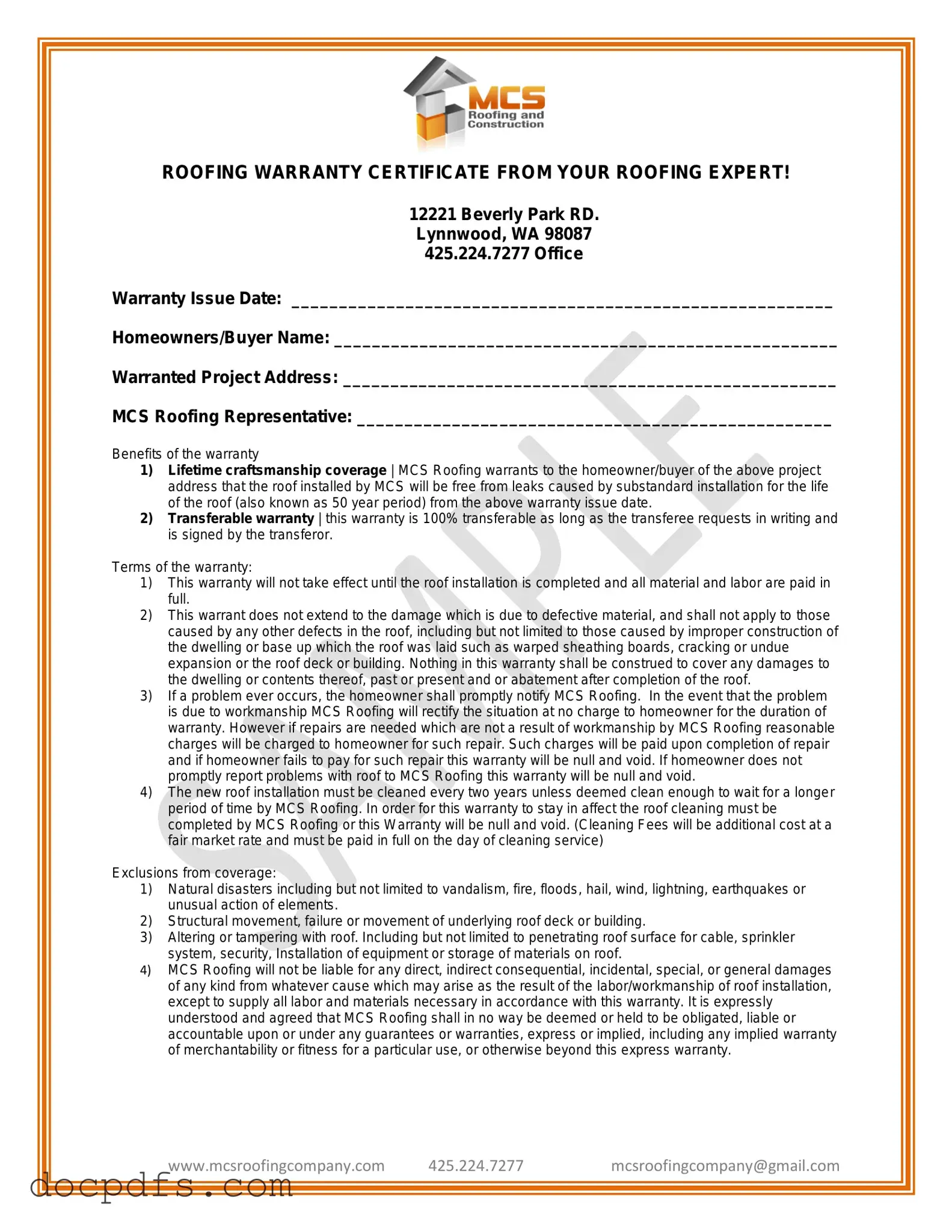The Roofing Warranty Certificate serves as an important document for homeowners who have recently had a roof installed by MCS Roofing. This certificate outlines the specific terms and benefits associated with the warranty, ensuring that homeowners are informed about their rights and responsibilities. One of the key features of this warranty is its lifetime craftsmanship coverage, which guarantees that the roof will remain free from leaks caused by substandard installation for a period of up to 50 years. Additionally, the warranty is transferable, allowing new homeowners to benefit from the coverage as long as the proper procedures are followed. The form also details essential terms that must be met for the warranty to remain valid, such as the requirement for the roof installation to be fully paid before the warranty takes effect. Homeowners are encouraged to report any issues promptly to MCS Roofing, as delays could invalidate the warranty. Furthermore, regular maintenance, including biannual cleaning by MCS Roofing, is necessary to uphold the warranty's validity. The certificate also lists exclusions from coverage, such as damage from natural disasters and structural issues. Understanding these aspects can help homeowners make informed decisions and ensure their investment is protected.
